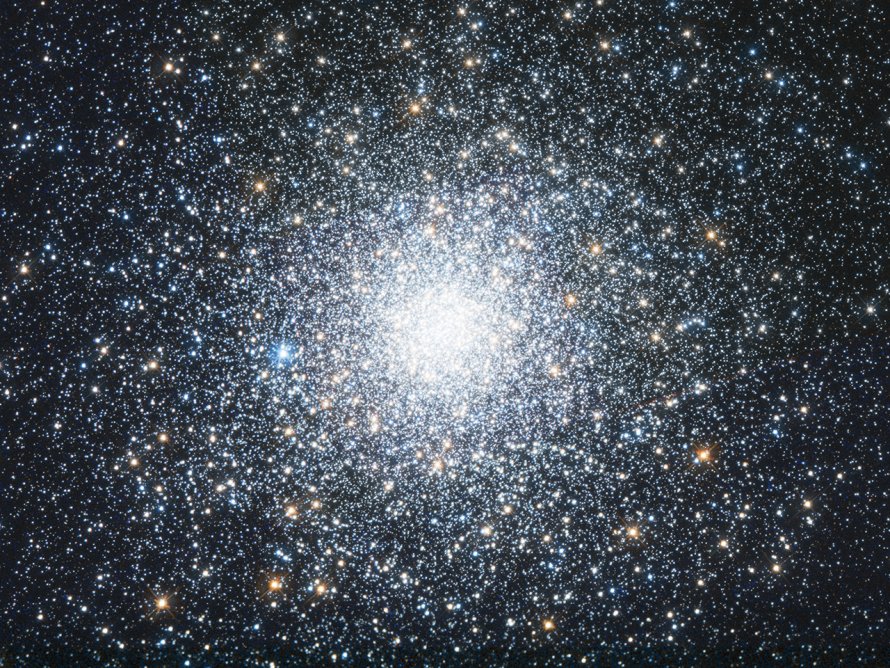M75 (NGC 6864)
Messier 75 (NGC 6864) is a globular cluster located in the constellation Sagittarius, in the Galactic Center of the Milky Way Galaxy in the Local Group of galaxies. M75 is 68000 light years away from Earth.
M75 is best viewed during late summer, is magnitude 9.2, and can be viewed with binoculars. M75 is 6.8' in apparent size. For reference, the full moon is 30'.
Observing difficulty: Intermediate
- Name:
- Type:
- globular cluster
- Constellation:
- Sagittarius
- NGC or IC:
- NGC 6864
- Magnitude:
- 9.2
- Viewing:
- binoculars
- Size:
- 6.8'
- Distance (light years):
- 68000 LY
- RA:
- 20h 6.1m
- Dec:
- -21 55'
- Season:
- late summer
- Milky Way location:
- Galactic Center
- Galaxy group:
- Local Group
- Messier Marathon #:
- 105
* The naked eye can see up to magnitude ~7-8 objects under ideal dark sky conditions.
A Distant Globular Cluster
Messier 75 (M75), or NGC 6864, is a globular cluster located in the constellation Sagittarius. The cluster is one of the most densely populated clusters in the Milky Way and is one of the more remote globular clusters known. It was first discovered by Pierre M?chain in 1780, and subsequently included in Charles Messier's catalog.
Characteristics of M75
At an estimated distance of about 67,500 light-years from the Earth, M75 is located on the outer edges of the Milky Way galaxy. This dense ball of stars spans about 180 light-years across and is classified as a Class I globular cluster on the Shapley?Sawyer Concentration Class scale, indicating it is one of the most tightly concentrated globulars known.
The estimated age of M75 is approximately 13 billion years, making it one of the oldest globular clusters. As such, it offers valuable information about the early stages of our galaxy's formation.
Magnitude and Size
M75 has an apparent magnitude of 9.18, making it challenging for naked-eye observers. Its diameter is about 6.8 arcminutes, making it appear smaller than many other globular clusters. Its integrated magnitude, spread over this small diameter, makes it a challenge for small telescopes, especially in light-polluted conditions.
Finding and Viewing M75
To locate M75, it helps to find the 'teapot' asterism of Sagittarius, which is easily spotted during summer and autumn evenings from the Northern Hemisphere and most of the year from the Southern Hemisphere. Start from the star at the top of the teapot's lid, Kaus Borealis, and move about 5 degrees south and a little west. With good conditions, the globular cluster should appear as a faint, hazy spot even in small telescopes.
Because of its distant location and condensed core, resolving individual stars in M75 is a challenging feat that typically requires a large telescope and excellent observing conditions. A small telescope or good binoculars will show it as a fuzzy star, while mid-sized telescopes will reveal its bright, compact core surrounded by a fainter halo.
In conclusion, M75, with its tightly packed core and distant location, presents an intriguing challenge for amateur astronomers. Its dense population and the faint sparkle of its myriad stars offer a beautiful spectacle for those who are able to discern it.



